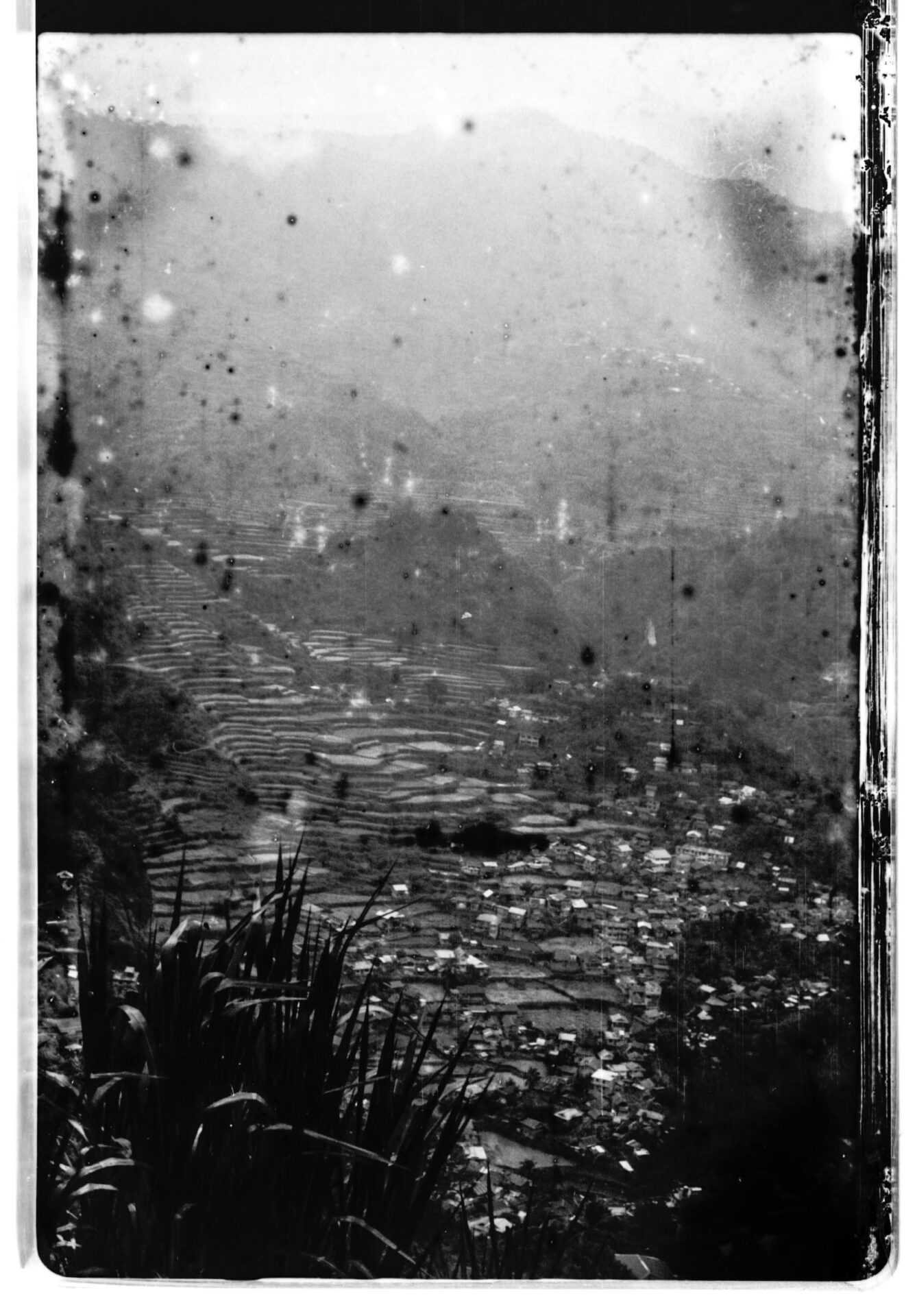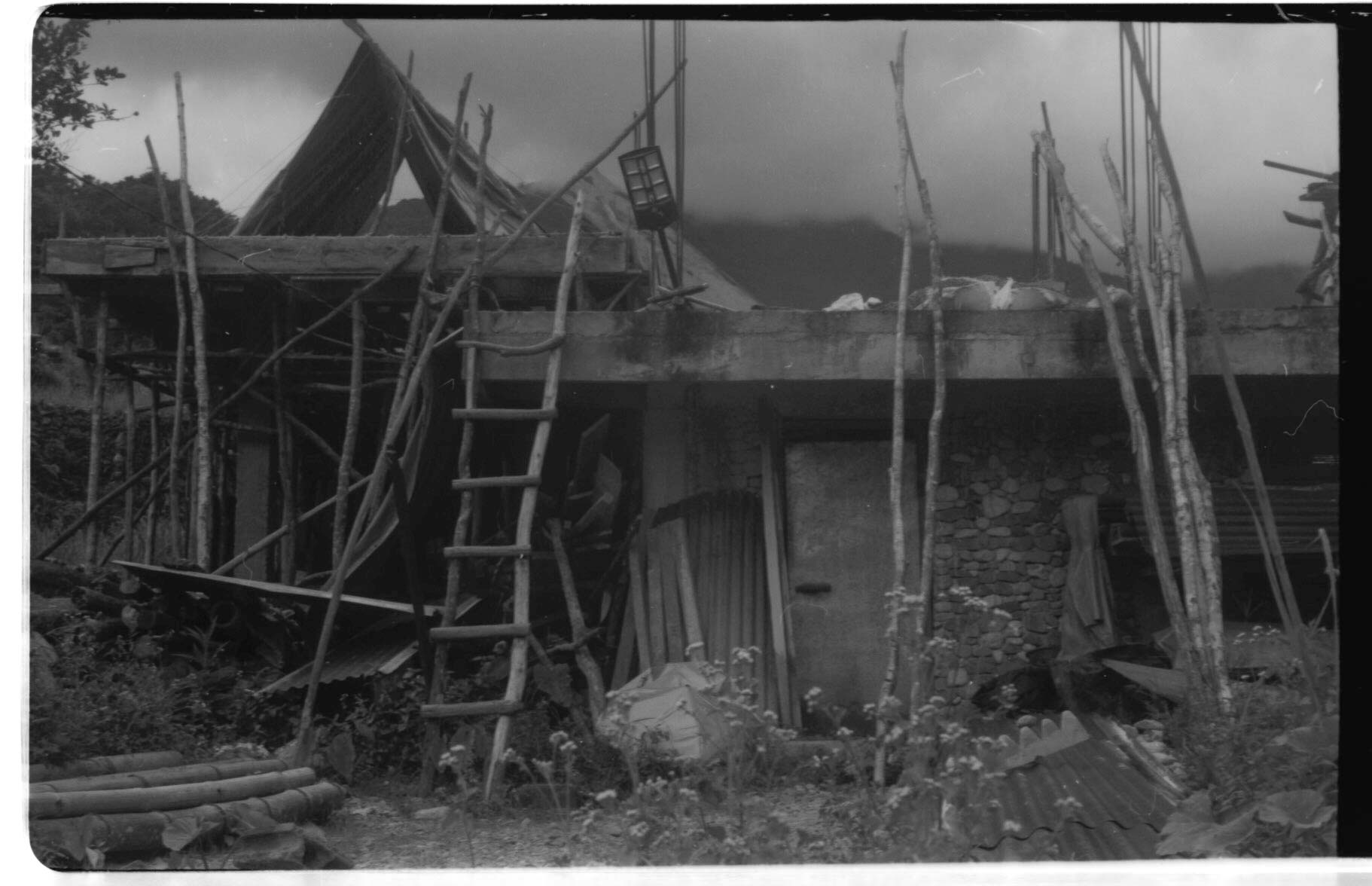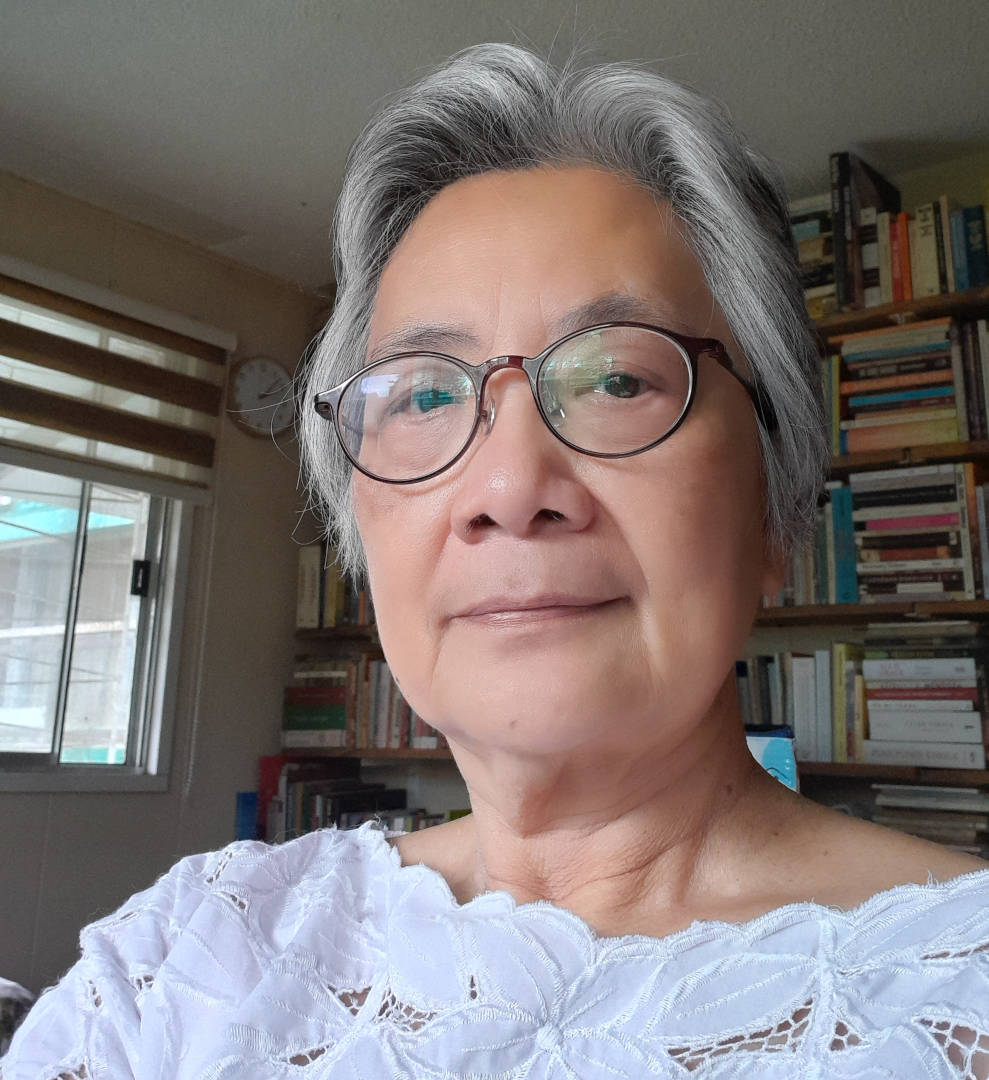Photos courtesy of the artists
To a certain community in Baguio, film is the way to go to capture a different rhythm of life, far from the easy-to-capture pixels of smart phones and digital cameras.
Ongoing at the iBAG-IW 2025 exhibition at the basement of the Baguio Convention Center are the “Silver Gelatin Print Exhibition” and “B: Show! A Community Exhibit of Analog Photography and Silver Gelatin Prints” at Oh My Gulay at La Azotea building, Session Road.
Among the exhibiting artists are Gari Buenavista, Jason Asiong, Russel Ariola, Faith Erasmo, Ian Christopher Mangaoang, Andreo Bongco, Ja Amores and a darkroom worker who prefers to just go by the name Fidel. Their subjects range from intimate scenes of family life to the lives of indigenous peoples, from mountain landscapes to urban street scenes.

In an online interview with VERA Files, the eight artists explained why they chose their media and what drew them to it. Buenavista said, “I liked the black and white photos of Life magazine when I was still in elementary school. I didn’t like the colored family photos we have at home. I grew up watching black and white television. I enjoy the simplicity of black and white. I was fascinated by the image appearing while the paper is in the developing tray. I just enjoy looking at black and white images more than color.”
Asiong said, “I started making silver gelatin prints back when I was a fine arts student at the University of the Philippines Baguio. Making darkroom prints has given me the freedom to be creative with my photos. I have the creative control on the photograph and the final prints I make.”
Ariola got interested in photographic history, including the earlier process before silver gelatin prints. “The handmade chemical process of making a photo is rewarding compared to new technologies.”
Erasmo said, “Silver gelatin prints are timeless in visual taste. The quality will outlast me for sure. The process from shooting to developing to printing takes so much of my being. Doing this is a conscious and meditative act. I honestly have a lot anxiety when about to develop and print. It reaches a point of when I procrastinate.”
She continued, “But the satisfaction after getting over that hurdle is unexplainable. It’s as if a thorn was removed from your side.”
Mangaoang said, “Honestly, I didn’t choose silver gelatin in a dramatic, destiny-changing way. It just happened. I saw the poster for last year’s ‘B: Show,’ but I didn’t even plan on joining. Most of my black-and-white work were from Ifugao, not Baguio or Benguet. Then one of the darkroom printers, Russel Ariola, messaged me on Instagram and told me I should submit. So I did. Everything snowballed from there. It was more of a right place, right time thing than a calculated artistic decision.”
Bongco, who acts as the group’s leader, said, “I was drawn to making silver gelatin prints because of its uniqueness. There is something about keeping a dying art alive and being able to make photographs with your own hands.”
Amores said, “My mom (anthropologist Analyn Salvador-Amores) got me into film back when I was high school. I only got to rekindle the hobby and found fun on another level after college when I met Uncle Jason, and Kuya Andreo who introduced me to silver gelatin prints.”
She added. “When I first got into the darkroom, it was like a dinner party. You get to mix your drinks, cook your favorite food, play your own music and find joy in witnessing different moments. I found it an intimate process where I get to choose the film photo to enlarge. I have creative control, and I apply my personal touch to achieve the desired aesthetic. I love how I can also do one-of-a-kind print with my own input by manipulating light and materials.”

Simply Fidel said he was into print photography “because of the process. Compared to modern methods of printing, silver gelatin printing involves you more in the process. Darkroom printing requires you to be more active in the creation of the print. From mixing various chemical baths, setting up your enlarger, doing test prints and printing the final image, these steps make printing feel more personal, compared to pressing a button and waiting for an output.”
The virtue of the medium being time-consuming
Asked if their chosen medium is time-consuming in the age of iPhones and Androids, the group members were one in saying that they didn’t mind the patience it takes to finally behold a print.
Buenavista said, “It is time-consuming, but the final output, a black-and-white print from the darkroom, is more enjoyable to look at and hold.”
Asiong said, “Darkroom printing is a meditative process for me. In a time of AI-generated images, I find the slow process more rewarding and fulfilling. For me silver gelatin prints are true photographs.”
Ariola disagreed that the process was time-consuming, saying, “Once you learn the process, the workflow gets faster. There’s a joy in not having something instant, an anxiousness that’s always exciting.”
Erasmo admitted that print photography could be time-consuming. “It is. So from the start, I always ask myself before taking the photo: Is this image worth all the time, energy and resources? To be honest, it is hard for me to finish a roll of film. It takes months or a lot of inspiration. All the shots are well-chosen.”
Mangaoang also agreed time is required. “But the point of analog isn’t speed. If I wanted convenience, I’d just use my phone like everyone else. Film slows me down in a good way—the limitations force intention. And printing in the darkroom? That process gives the photograph a physical presence that digital can’t fake. So sure it’s slower, but the slowness is part of the magic.”
Bongco said, “Yes, it is very time-consuming actually, but it sets your photographs apart if you can make good photographs and print them in the darkroom. Using film is hard, but once mastered, it gives your art a different look.”
Amores said, “I take a long time to click the shutter. I’m bad with light meters and the technical stuff. Most of the time, I miss the moment that I wanted to capture. Taking photos through your film camera makes you pause and reconsider what you experience. It can be an expensive affair, but you get to anticipate, have an intention in taking photos. The unique imperfections such as scratches, light leaks, more grains and whatnot give the photos a unique aesthetic that you can never repeat or do on a cellphone.”

Fidel said it was the time element that drew him to the medium. “The silent anticipation of wanting to see your images as you wait for them to get developed, the catharsis of seeing them for the first time feels a lot more rewarding and makes you appreciate your work more compared to seeing them the moment you take them. We’re in the age where information is instant—shooting on an iPhone or a digital camera where you can see your photo immediately after taking it. Millions of photographs are taken daily which are never looked back upon, forgotten in an old iPhone’s failing memory.”
Allure of analog photography
To the question what is the allure of analog photography and who inspired them to do it, Buenavista answered, “Analog makes me more choosy of the image I would like to shoot. For one it’s expensive. A roll of film costs at least 450 pesos. I have a limited number of shots per roll. A regular 135mm film has just 36-40 shots. I have to be conscious of the number of shots I take. My mother was the photographer of our family. She always had a Kodak Instamatic 110mm film camera. She’s most likely the one who influenced me. But it was my kuya who taught me how to operate an SLR film camera.”
Asiong said he likes the “imperfections of the process and any old process, the look that can never be achieved with photo manipulation, the effort it takes to create a photo from start to finish. What inspires me is the film community which is made up of like-minded and new-to-the -process individuals.”
He added that he loved “the entire process of analog photography from the time the mechanical shutter fires to the chemical process where the images slowly appears through gentle agitations.”
Erasmo recalled how she started photography with a film camera and saw how different film looks from digital. “I like the organic quality of film. You also can’t make mistakes with digital because they do the work for you. With film, buhay ang diwa (the idea is alive). I have to check everything before pressing the shutter. The camera, the tool follows you, not the other way around. I’m also a late gratification person so waiting isn’t an issue for me.”
She continued, “Film is similar to life. It is uncertain. It teaches me detachment, it forces me to analyze and hopefully learn from mistakes. It makes me embrace the unexpected, especially the imperfections.”

Mangaoang said, “Analog feels alive. Every step has a bit of risk, a bit of chaos and a bit of craft. You’re not just taking an image—you’re making it from the shutter click to the enlarger to the final print washing in the tray. You see your mistakes. You feel the weight of your choices.”
Bongco said he was drawn to analog photography because of his uncle’s old film cameras. Initially, the uncle discarded his old film gear. So Bongco took the gear from the refuse pile and started tinkering with it out of curiosity.
He also said, “The reason I continue with analog photography is because of the film community in Baguio. They inspire me to make my art better, and they are a great group of people to nerd out with.”
Amores said, “I’m interested in two things with analog photography—its multi-temporality and the potential of the darkroom as a site of experimentation and a form of art. The multi-temporality shows me that it’s not how it stops time anymore, it’s about the nature of being in motion. You get to use something older than you to take pictures of different scenes, people, places at different times. From the process and the way you tell a story or just simply capturing what you want, you get to experiment how you take photos without knowing the outcome while also letting yourself give a meaning to what you took. Seeing how film photography and illustrations can go together also inspires me to keep using film as an art form as well.”
Fidel said, “Analog photography has taught me to be patient and to shoot with intentionality. It has also helped me learn what subjects I want to shoot. My girlfriend was the first person to teach me about film photography and photography in general. She inspires me to do better in each roll I shoot.”

Photographers’ idols
As to the photographers they admire and why, Buenavista said there were too many to mention, but he singled out “Henri Cartier-Bresson because of his decisiveness and elegance, Masao Yamamoto for his simplicity and minimalism, Brooke Shaden for her creativity in illustrating an idea, Gregory Crewdson for his ambiguous cinematic scenes, Francesca Woodman for her fearless self-portraiture, Roger Ballen for his dark and mysterious scenes,. Joel Peter-Witkin for his macabre portrayal or reinterpretations of art from the past, Helmut Newton for injecting strong sensuality in women’s fashion, Steve McCurry for capturing the beauty of ordinary people’s lives, Edward Curtis for his pictorial images of the native American Indians.”
Among the Filipino photographers, he looks up to Ezra Acayan, Jes Aznar, Alex Baluyut, EV Espiritu “for making beautiful news photographs,” he said. “There are so many great photojournalists and photographers that it’s impossible to name all of them.”
Locally, Asiong is inspired by the works of Eduardo Masferre and Tommy Hafalla. Ariola mentioned Mathew Brady for taking “iconic portraits during the American Civil War. James Nachtwey photographed some recent wars. Documenting within a hectic environment is such an unbelievable task.”
Erasmo is attracted to abstraction, minimalism and empty spaces in images. She said Kawayan de Guia’s photography may look off, but “they are more textured than visual. I embrace imperfection. In Kawayan’s photographs, he consciously lets the elements take over.”

Mangaoang bows to “a mix of giants, modern storytellers and the people I actually get to learn from on the ground. My personal ‘holy trinity’ is Ansel Adams, Fan Ho and Sebastião Salgado. Adams is the landscape god, no debate. Fan Ho turned Hong Kong into pure poetry with light and shadow. And Salgado, man! His book Genesis is on a different spiritual plane. That book isn’t just photography, it’s scripture for anyone who loves the planet.”
He also acknowledged Masferre, the father of Filipino photography, “whose work is basically our cultural backbone and Eduard Steichen, the definition of ‘jack of all trades, master of all.’ The guy won an Oscar on his first try and created ‘The Family of Man,’ one of the most important photographic exhibitions ever made. That’s range you just respect.”
He continued, “For contemporary influences, Thomas Heaton keeps landscape photography grounded and intentional. Evan Ranft is someone I admire for both his clean aesthetic and his smart, sustainable approach to the photography business.”
Finally, he likes the photographers he shoots with like Ariola, Asiong, Erasmo, Bongco and Buenavista. He said, “Going on a shoot with Rusel and Jason—both large-format shooters—feels like tagging along with the modern-day Ansel Adams and Edward Weston. The craftsmanship, the patience, the way they read light—it’s wild to witness up close.”
Bongco is also an admirer of Ansel Adams for his foresight and practical theory in photography. Locally, he looks up to Masferre and Hafalla for their documentary photography.
There seems to be a mutual admiration society within this community. Amores said she admires Asiong for “his attention to detail and precise discipline in his darkroom practice. Being in his darkroom is on another level and makes you dream of doing more silver gelatin prints. I also like women photographers Viviane Sassen, Aida Muluneh and Rinko Kawauchi because I like photos that look like dreams, like paintings.”
Fidel favors the works of Bruce Gilden, W. Eugene Smith, Barry Talis, Reuben Radding and Arnold Daniel because he likes shooting street scenes.
The iBAG-IW show is up until Nov. 23 while B: Show! will run for two months.

